Like most homeowners, you want your gardens to be beautiful. So, you might be considering marigolds for a particular area. And to help you get some ideas about incorporating this flower, we have conducted thorough research about marigold planting and care, including when they bloom.
The marigold blooming period starts in May and continues until September. They will flower for a considerably extended period in USDA plant hardiness zones 10 and higher, where the winter lows do not drop below freezing.
Marigold plants are straightforward to care for as long as you know how to do it. If you wish to gather information about marigolds, we suggest you keep reading. Doing so will also teach you how to propagate, pot, repot them, and more. Let's delve into the details and enjoy reading!
![marigold yellow flower marigold tree orange marigold marigold petals, When Do Marigolds Bloom? [By Month, By Zone]](https://gardentabs.com/wp-content/uploads/2023/01/When-Do-Marigolds-Bloom-By-Month-By-Zonerev.png)
What Month Do Marigolds Bloom?
Marigolds have an extended flowering period, from May until September. Marigolds can keep blooming into October in milder climates or zones. On the other hand, expect that the marigolds in colder zones won't begin blooming until June.
Plant marigold seeds outside two weeks before the last cold if you want them to start flowering as quickly as possible. And expect them to develop after another two weeks.
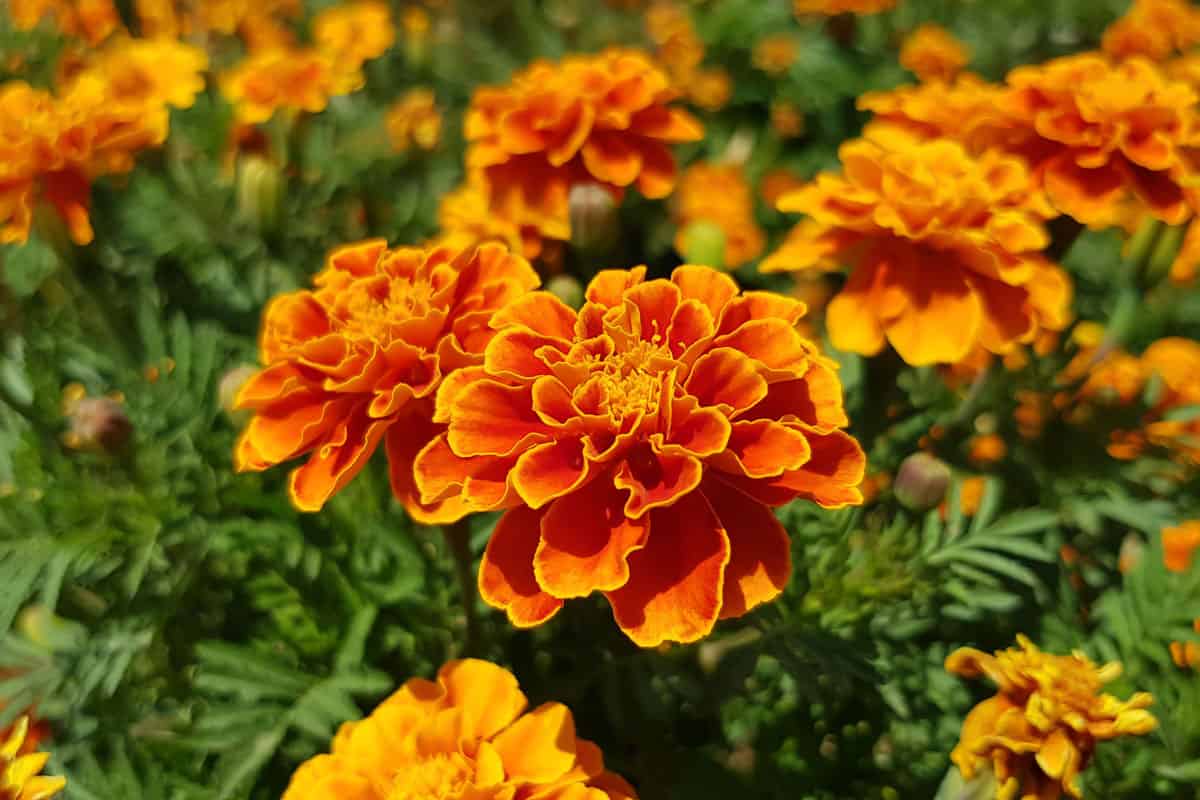
What Zone Do Marigolds Bloom Best?
As mentioned, marigolds will bloom longer in zones 10 and beyond, where winter lows don't get below freezing.
They will begin flowering in May and continue through September. If you live in a warmer zone, your marigolds will continue to bloom through October. They could also be late bloomers, not opening their petals until June in chilly regions.
How To Properly Care For Marigolds?
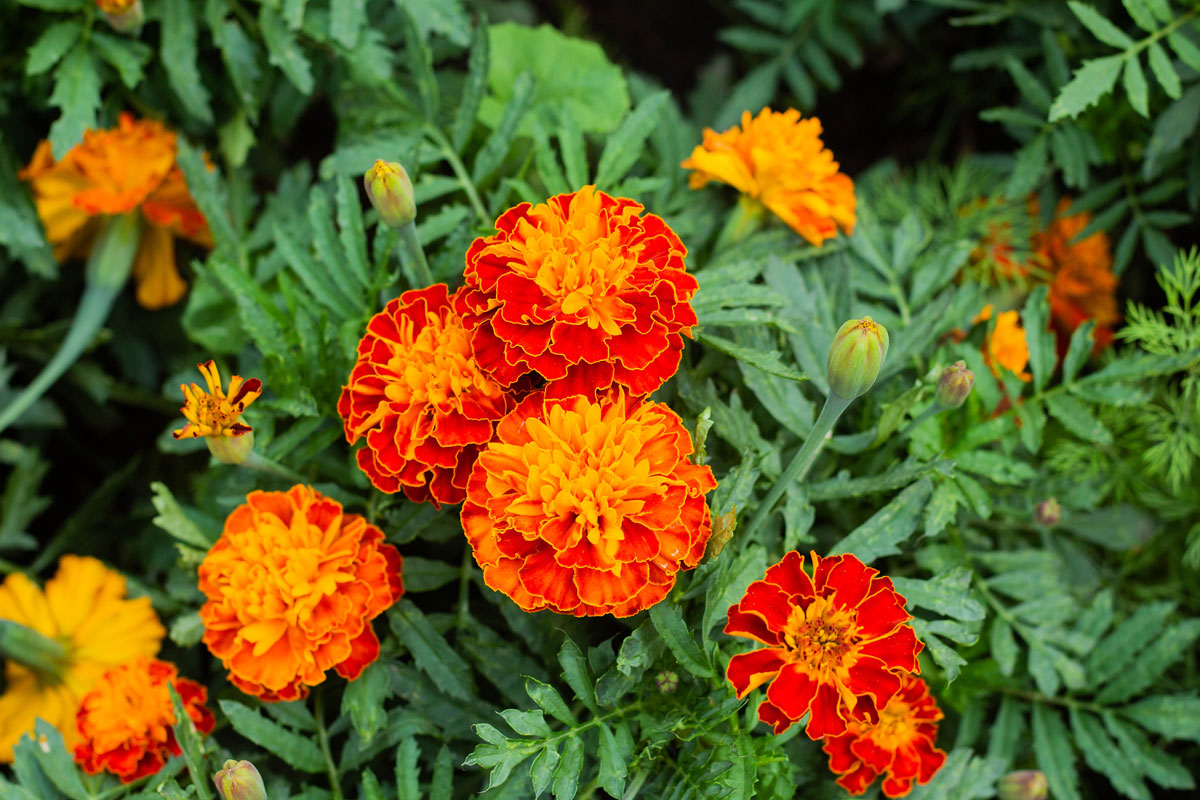
Planning to incorporate marigolds in your garden is an excellent choice, especially since they are straightforward to care for and maintain. Additionally, pests won't easily harm them. And know that you can use marigolds to deter pests that infest nearby plants.
Marigolds are one of the prettiest flowers that can bloom, and they can continuously be that way throughout summer until the cold season. If you wish to achieve that, it would be best to deadhead them regularly.
Keep in mind that the flowering of this plant might slow down a bit during the warmer weather, but expect it to pick back up as the weather cools down.
To grow taller kinds of African marigolds, it is common practice to remove their lower foliage before placing the stems deeply in the ground. It helps the marigolds develop a robust root system, so you won't have to stake them as often.
Please check the details below on how to care for your marigolds properly.
What Soil Type For Marigolds?
Marigolds are easy to care for when it comes to the soil since they are not that picky. You can use any reasonable type of soil for these plants. However, ensure that the soil is not too acidic.
It would be best to keep the soil at a pH range between 6.0 and 7.0. They can also thrive on soil full of organic matter and may even prefer it.
Should I Fertilize Marigolds?
Good thing that marigolds won't need any fertilizer as long as the soil is rich in organic matter. You will only need to feed them with fertilizer if you are to plant them in impoverished soil.
And as mentioned, you need to conduct a deadheading task to keep them flowering regularly.
How Much Water Do Marigolds Need?
It is advisable to water your marigolds regularly after planting them in pots or in your yard. In addition, it is crucial to keep in mind that you should avoid them sitting for too long in dry soil.
Water your newly planted marigolds daily, especially if it is too hot. After a few weeks, they'll have a stronger root system and can handle less water, but they'll thrive with weekly irrigation.
What Lighting Do Marigolds Prefer?
When it comes to the sunlight you should provide your marigolds, it is highly advisable to plant them in an area where they could get full sun.
If you place them in shady locations, expect them to become droopy or leggy and produce fewer flowers.
What Is The Best Temperature & Humidity For Marigolds?
The breeding zone of marigold is between 2 and 11, but it does best in the warmer summer temperatures of zone 11. While the blossoming of these true annuals might slow down during the hottest part of the season, especially in regions with high humidity, it will start up once more as the temperature drops in the later summer and autumn months.
What Pests And Diseases Can Damage Marigolds?
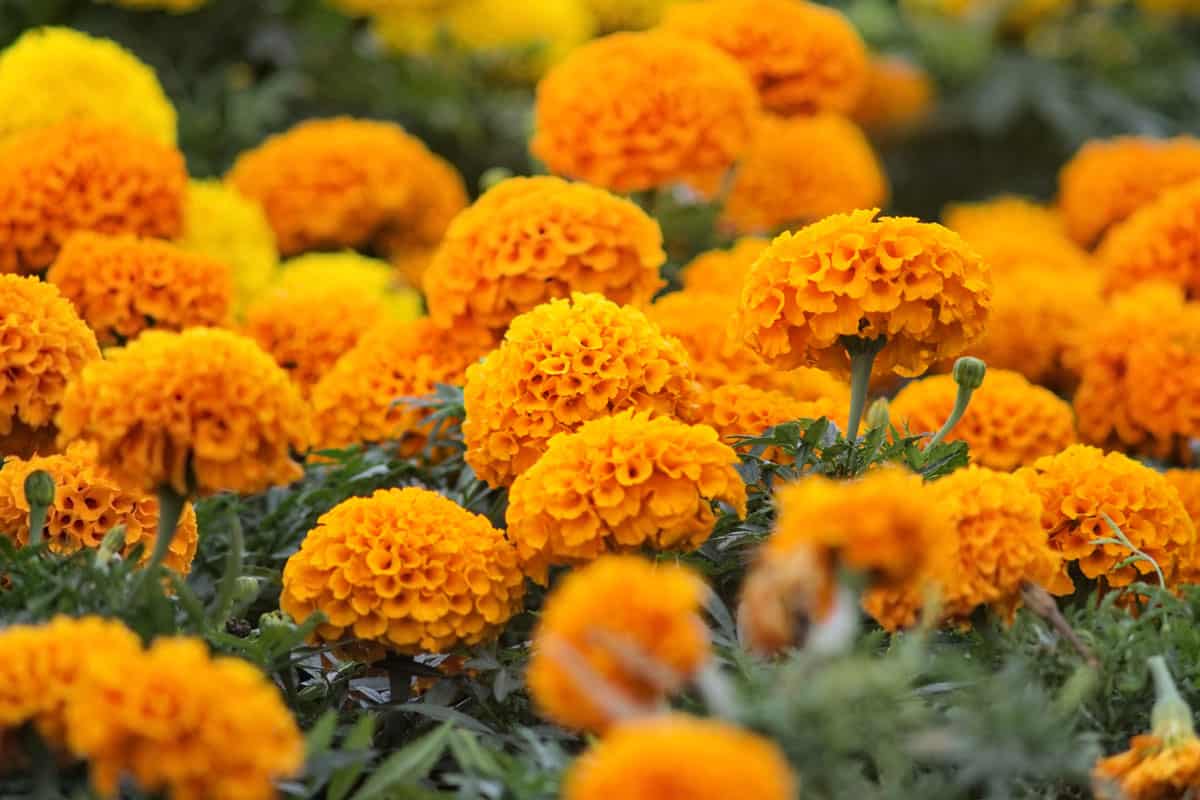
Even though marigolds rarely suffer from harmful insects or diseases, they do have the following issues:
Aphids
Aphids are a nuisance most of the time, but good thing that you can readily eradicate them with horticultural soaps or oils.
Slugs Or Snails
Snails and slugs are persistent pests for marigolds. Some leaf eating is possible, especially on tender new growth. These pests likely cause the torn and irregular holes in the leaves you've noticed. Clear the soil of dead leaves and place traps for slugs and snails if necessary.
Check out this decorative slug trap on Amazon.
Powdery Mildew
Marigolds frequently suffer from powdery mildew. Fungal spores splashing up from the soil or between infected plants are typically responsible for the white residue that forms on foliage. This illness is unsightly but rarely lethal. To prevent this from happening, space your plants far enough apart and water the soil instead of sprinkling the foliage directly.
How To Propagate Marigolds
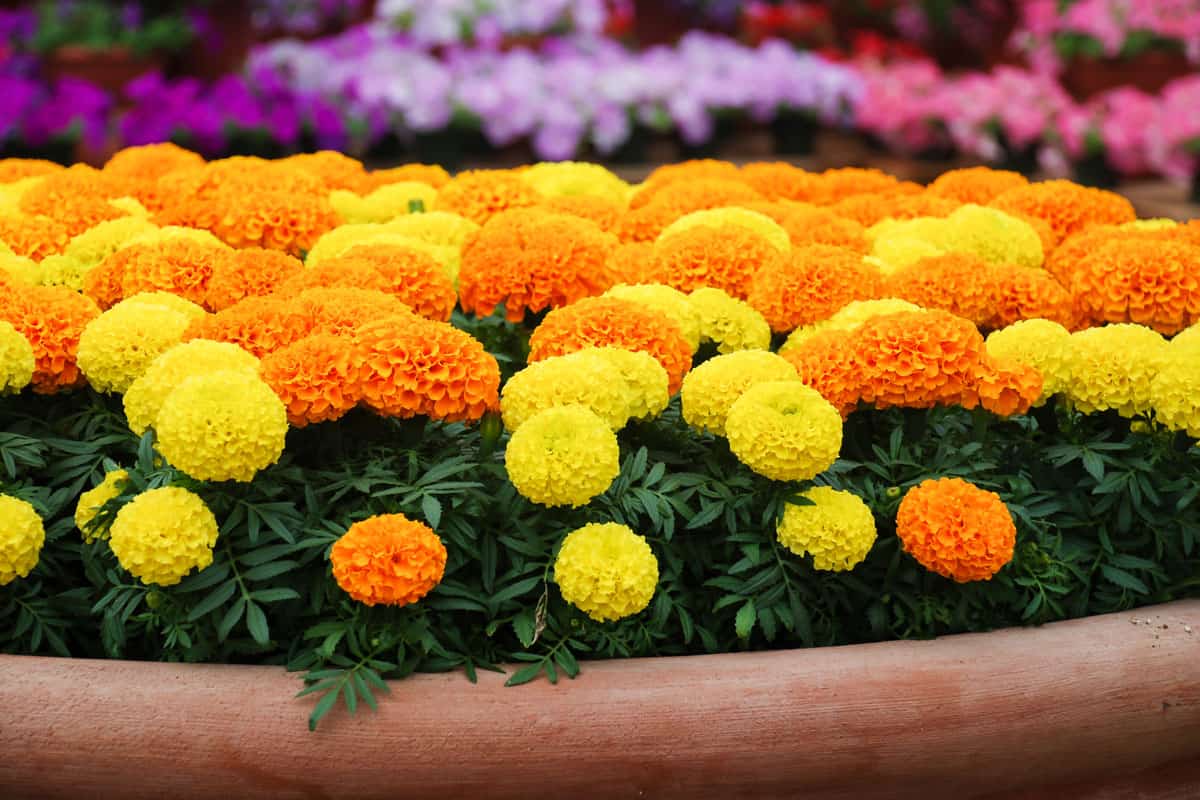
Know that vegetative propagation is not that common in marigolds since you can quickly grow and plant them from seeds. On the other hand, rooted cuttings from stems are a simple process if you want to spread your plant's genetics. Please follow the procedures below:
1. Take Cuttings
Get sharp pruning shears to cut off healthy green stems from your marigold plant. Ensure to cut it at a four-inch length and without flowers.
Check out this pruning shear on Amazon.
2. Remove The Leaves, Flowers, And Flower Buds
Eliminate all the flowers, flower buds, and leaves from the lower part of the cutting.
3. Dip To A Rooting Hormone Before Planting
Dipping the marigold cutting you took in a rooting hormone is advisable. After that, plant it in a seed-starter mix for at least two inches deep.
Check out this rooting hormone on Amazon.
Know that you can mix sand, perlite, and potting soil for this one.
4. Tamp Down The Soil
After putting the cutting into the soil, it is advisable to tamp it down and moisten it. Put the container in a flat area and place a plastic bag above it to create a DIY mini greenhouse.
5. Let The Cutting Receive Adequate Sunlight
Find a spot where the cutting can obtain bright, direct sunlight. Additionally, you should lightly water the soil every four days. Keep in mind that you should protect the soil from waterlogging.
6. Transplant The Marigold
Observe the cutting after several weeks because they will soon take root. Once you notice roots taking place, it is advisable to transplant them into bigger containers and use good commercial potting soil.
Moreover, know that you should wait for them to establish well before transplanting them to your garden.
How To Propagate Marigold From Seeds?
In contrast to other flower seeds, marigolds are a breeze to germinate. Marigold seeds grow fast when placed directly into garden or yard soil, but you may also begin planting them indoors approximately six to eight weeks before your last frost date for the earliest blooming.
You may not know this, but you might not need to plant any new marigolds if the ones you had last year are so successful at self-seeding. When planting marigold seeds inside your home, you must scatter seeds over a tray that is full of commercial potting soil. It is highly advisable to make it slightly damp.
Moreover, it would be best to sprinkle vermiculite over the seeds before you wrap the container with plastic to create a greenhouse alternative. After that, please place it where it can get warmth. Lastly, remember that the seeds won't require sunlight until they sprout.
Check out vermiculite on Amazon.
Furthermore, expect the seeds to germinate after five days, then detach the plastic from the tray. You should provide the germinated seeds with five hours of natural or artificial sunlight. So, we advise placing the tray where the seeds can get such a requirement.
In addition, keep the soil damp, but ensure not to let it get waterlogged. If you wish to prevent damping-off fungus from destroying your plants, it would be great to water the soil underneath. Doing such a thing will allow the container slowly absorb the water, making it the best way to protect your marigolds from that damping-off fungus.
You'll know that it is time to transplant your marigolds if you notice some leaves occurring, presuming that there is no longer any risk of frost.
How To Prune Marigolds?
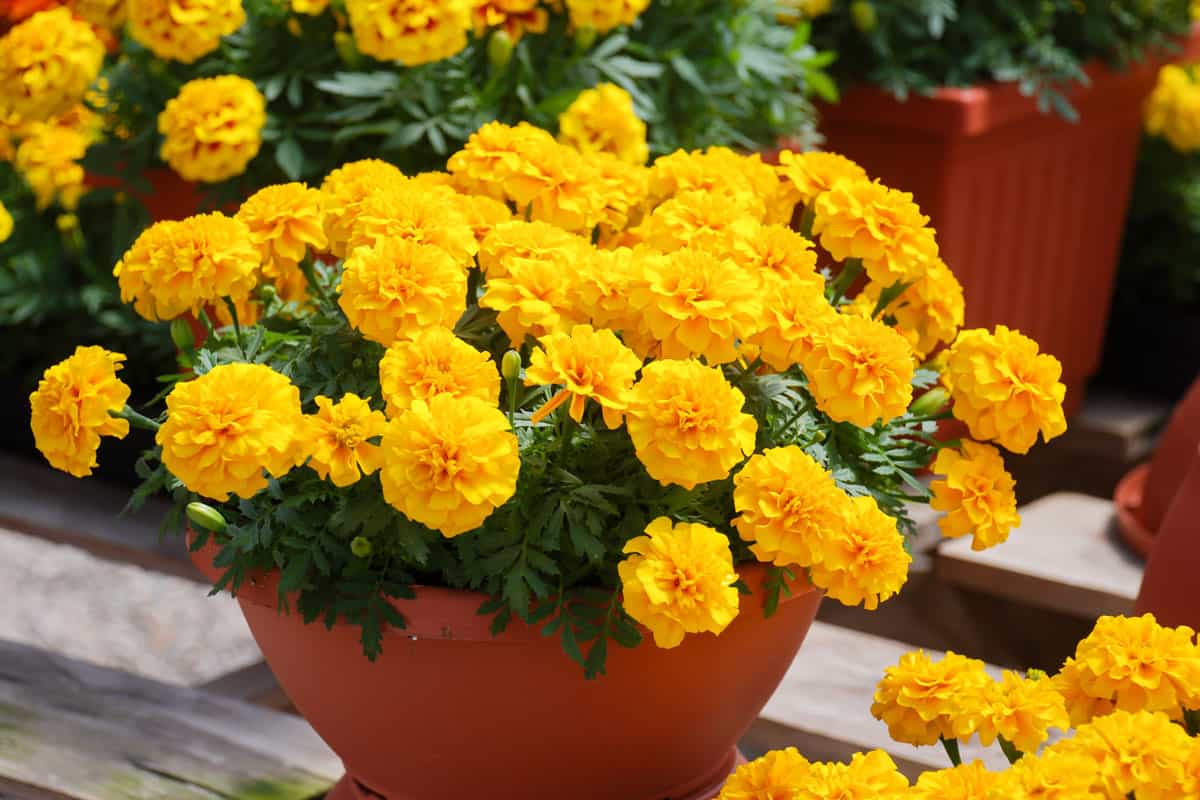
If you nip off a marigold's blossoms before they open, they will branch out and produce more flowers during the peak flowering stage. Regularly removing faded flowers or deadheading can encourage the marigold to continue flowering late into the fall.
Can You Overwinter Marigolds?

Wrapping It All Up
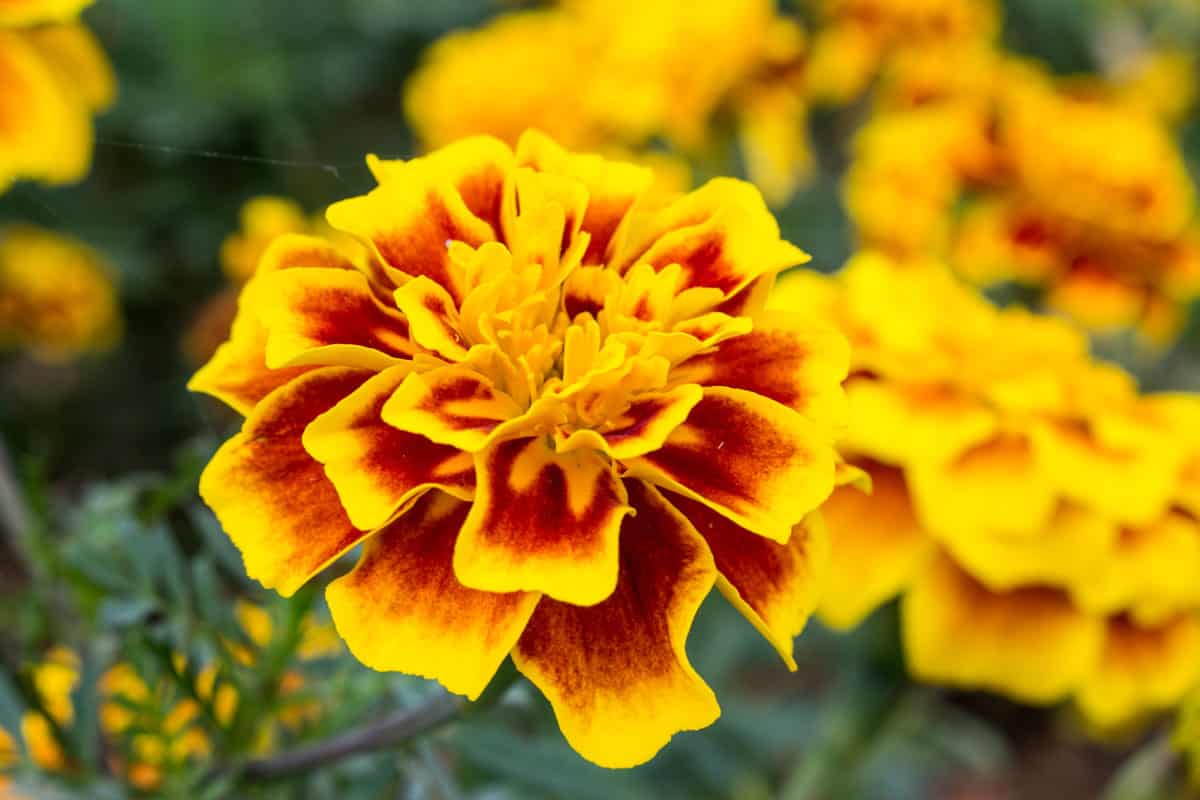
Knowing marigold plants, especially knowing when they bloom, is crucial. It is true, especially if you want them to produce continuous, vibrant, and healthy flowers. It is popular that the main reason why gardeners typically prefer marigolds to incorporate into their gardens is because of their long-lasting blooms.
You have finally made it to the end! We hope you find this post helpful. If you wish to continue reading, check these related posts out!
How Many Marigold Seeds Per Square Foot, Per Hole, or Per Pot?
Do Marigolds Attract Bees & Butterflies [Yes! Tips For Planting In Your Yard]




